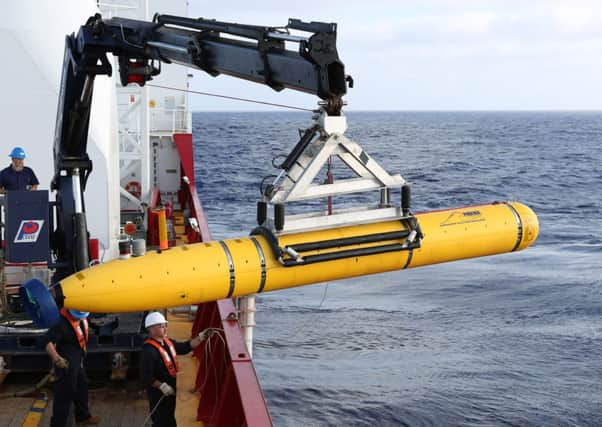Flight MH370 ‘not in Indian Ocean search area’


The Joint Agency Coordination Centre made the statement after an unmanned submersible - the US Navy’s Bluefin 21 - finished its final underwater mission in the southern Indian Ocean yesterday after scouring 330 square miles of ocean floor.
“The area can now be discounted as the final resting place” of the missing plane, the Centre said in a statement.
Advertisement
Hide AdAdvertisement
Hide AdThe agency said that an expanded search of a 21,600 square mile area, based on satellite analysis of the plane’s most likely route, would probably begin in August after commercial sonar operators are contracted.
Australian Transport Minister Warren Truss said authorities would continue to analyse the sounds that led to the initial search area.
“We concentrated the search in that area because the pings, the information we received, was the best information available at the time and that’s all you can do in circumstances like this, to follow the very best leads,” Mr Truss told parliament in announcing the search’s failure.
Opposition politician Tony Burke offered his party’s condolences to the victims’ families.
“The hopes of many have been dashed,” he told parliament.
Officials had described the detection of four series of “pings” in the area that the satellite data indicated was the likely crash site as their best lead in the search. The signals appeared to be consistent with those from aircraft black boxes, which contain flight data and cockpit voice recordings.
The locator beacons have a battery life of about a month, and the sounds were detected near the end of that expected lifespan for Flight 370’s beacons.
Earlier, CNN reported that the US Navy’s civilian deputy director of ocean engineering, Michael Dean, said most countries now agreed the sounds detected in April came from a man-made source unrelated to the jet. A Navy spokesman later denied Mr Dean’s claims.
Earlier this week, the Malaysian government released reams of raw satellite data it used to determine that the flight ended in the southern Indian Ocean, a step long demanded by the families of some of the passengers on board. The conclusion is based on complex calculations derived largely from brief hourly transmissions, or “handshakes,” between the plane and a communications satellite operated by the British company Inmarsat.
Advertisement
Hide AdAdvertisement
Hide AdBut while the 45 pages of information may help satisfy a desire for more transparency in a much criticised investigation, experts say it is unlikely to solve the mystery of Flight 370.
Flight MH370 vanished on 8 March during a flight from Kuala Lumpur to Beijing. It was carrying 239 people.